Potted plants are one of the most versatile ways to transform your spaces. Whether you’re sprucing up your patio, brightening a windowsill, or adding life to your indoor decor, plants in pots offer endless possibilities. But choosing the right plants that thrive year-round can be tricky.
The good news? We’ve done the legwork for you and compiled a list of the 12 best plants for pots that look great and stay healthy through every season. From hardy greenery to vibrant blooms, these plants will keep your space thriving no matter the time of year.
Why Choose Year-Round Potted Plants?
Potted plants offer plenty of benefits, including flexibility in placement and the ability to move plants indoors during extreme weather. Opting for plants that thrive year-round means:
- Lower maintenance compared to seasonal plants.
- A consistent pop of greenery or color to enjoy all year.
- Versatility to complement any decor style, indoors or outdoors.
Now, here’s our list of the best plants for pots to suit your space, lifestyle, and aesthetic preferences.
Best Plants for Pots All Year Round:
1. Evergreen Lavender (Lavandula)
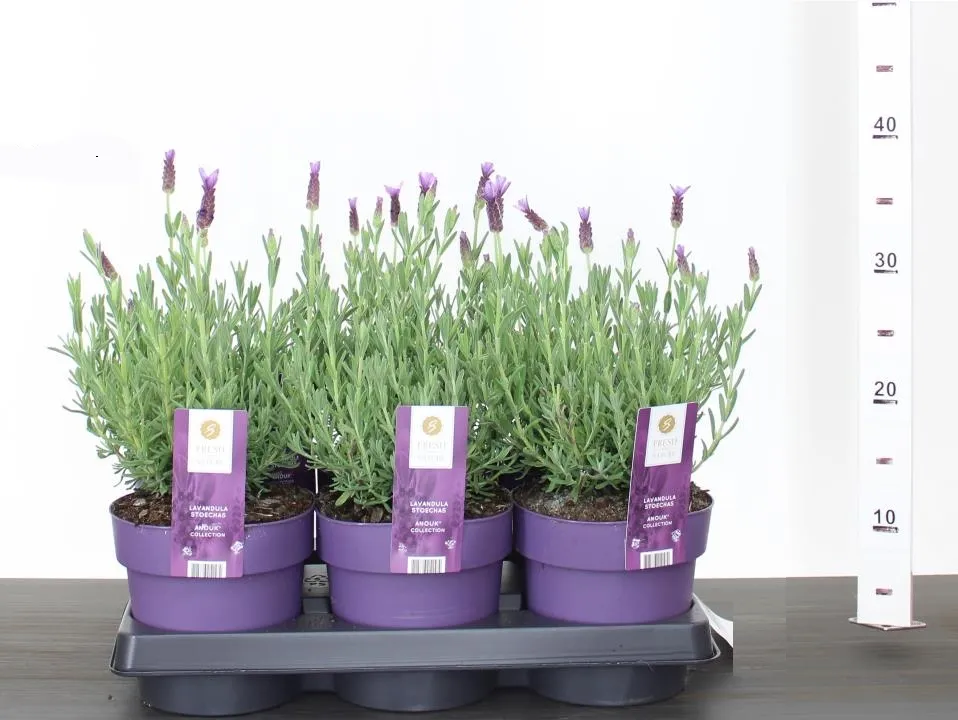
Lavender isn’t just for its divine fragrance—this hardy plant is drought-tolerant and looks incredible year-round. With narrow, silvery-gray foliage and delicate purple flowers, lavender adds a Mediterranean charm to patios and porches.
Care Tips:
- Sunlight: Thrives in full sun (at least 6-8 hours daily).
- Soil: Prefers well-draining, sandy or rocky soil with a neutral to slightly alkaline pH.
- Watering: Water sparingly; allow the soil to dry out between waterings to prevent root rot.
- Pruning: Trim back spent flowers and lightly prune in early spring to encourage bushy growth.
- Fertilizing: Minimal feeding is needed; a light application of compost or balanced fertilizer in spring is sufficient.
- Air Circulation: Ensure good airflow around plants to prevent fungal issues.
- Potting: If growing in containers, choose a pot with drainage holes and use a cactus or Mediterranean soil mix.
2. Peace Lily (Spathiphyllum)
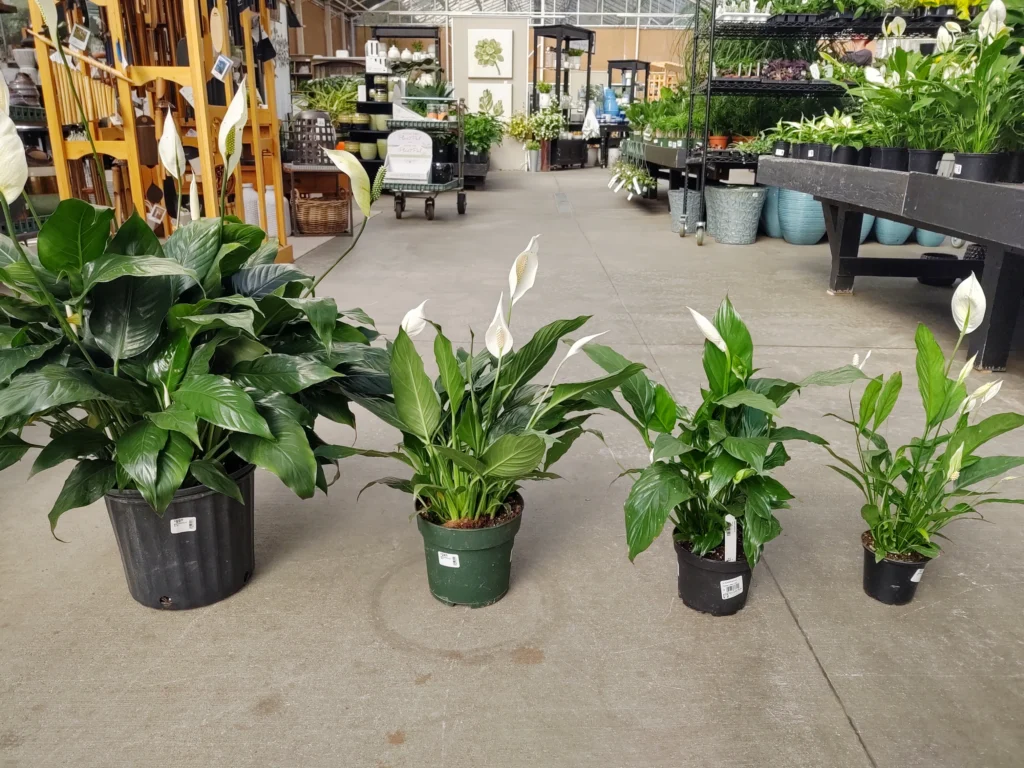
If you’re looking for a low-maintenance indoor plant with year-round appeal, the peace lily is ideal. Its glossy green leaves and iconic white blooms make it a favorite for home and office spaces alike.
Care Tips:
- Light: Prefers bright, indirect light but can tolerate low light. Avoid direct sunlight, which can scorch leaves.
- Watering: Keep the soil consistently moist but not soggy; water when the top inch of soil feels dry. Peace lilies are sensitive to overwatering.
- Humidity: Enjoys high humidity; mist occasionally or place near a humidity tray for best growth.
- Cleaning: Wipe leaves occasionally with a damp cloth to remove dust and maintain their glossy appearance.
- Fertilizing: Feed with a balanced liquid fertilizer once a month during spring and summer. Avoid over-fertilizing, as it can lead to brown leaf tips.
- Potting: Use well-draining, peat-based soil in a pot with drainage holes to prevent root rot.
- Flowering: Blooms best with consistent care; if not flowering, try increasing light exposure
3. Boxwood (Buxus)
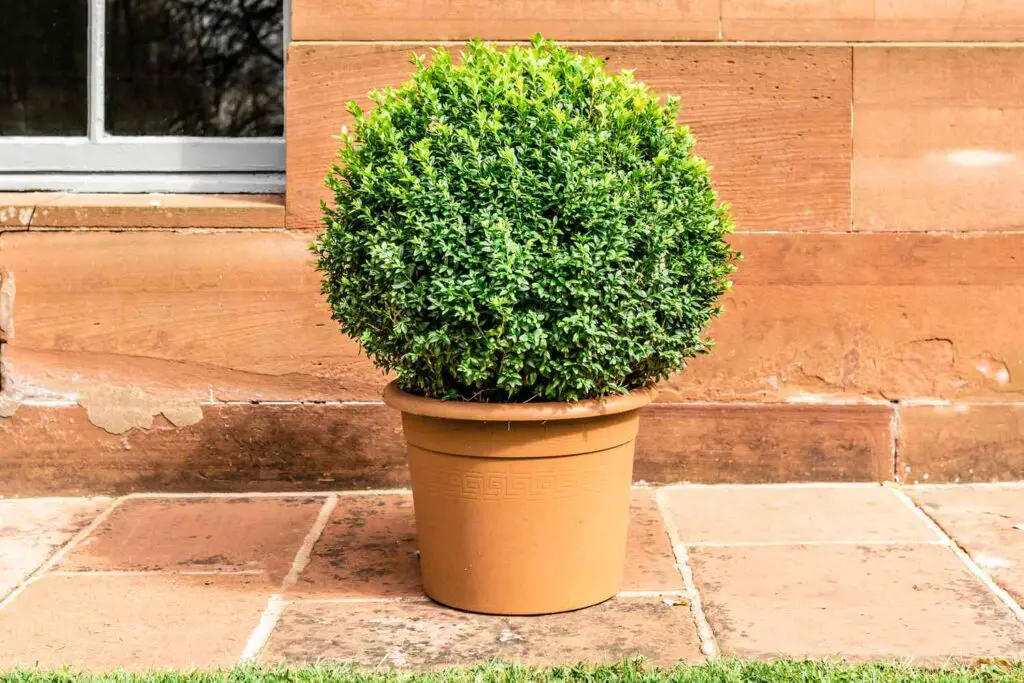
Boxwoods are perfect for those wanting structured, ornamental pots. Known for their dense, green foliage, they’re often shaped into spheres, cones, or hedges for a clean aesthetic.
Care Tips:
- Light: Thrives in partial sun to full shade but grows best with some morning sunlight.
- Soil: Prefers well-draining, loamy soil with a neutral to slightly alkaline pH. Avoid overly wet or compacted soil.
- Watering: Keep soil consistently moist but not waterlogged. Water deeply during dry spells.
- Pruning: Regular pruning helps maintain shape and encourages dense growth. Best pruned in late spring or early summer.
- Fertilizing: Apply a balanced, slow-release fertilizer in early spring to support healthy foliage.
- Mulching: A layer of mulch helps retain moisture and regulate soil temperature.
- Pest & Disease Prevention: Monitor for common issues like leaf miners, boxwood blight, and spider mites. Ensure good air circulation to prevent fungal diseases.
4. Geraniums (Pelargonium)
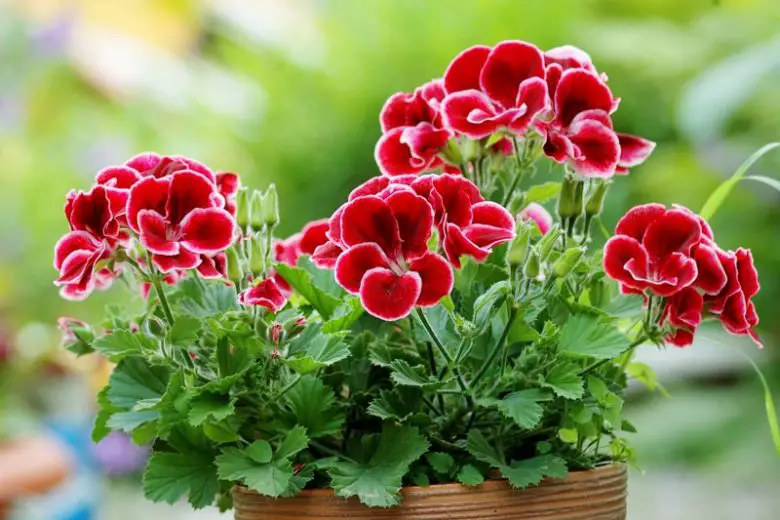
Geraniums are a classic choice for vibrant flowers in pots. They are hardy plants that bloom profusely, adding red, pink, or white pops of color to your space. While they’re associated with warmer months, hardy varieties can survive year-round.
Care Tips:
- Light: Needs full sun (at least 6-8 hours daily) for abundant blooms. Partial shade can reduce flowering.
- Soil: Prefers well-draining, fertile soil. A light, sandy mix works best.
- Watering: Water when the top inch of soil feels dry. Avoid overwatering to prevent root rot.
- Deadheading: Remove spent flowers regularly to encourage continuous blooming.
- Fertilizing: Feed with a balanced liquid fertilizer every 2-4 weeks during the growing season for best results.
- Pruning: Trim leggy stems to promote bushy growth.
- Overwintering: In colder climates, bring indoors before frost or take cuttings for the next season.
5. Fiddle Leaf Fig (Ficus lyrata)
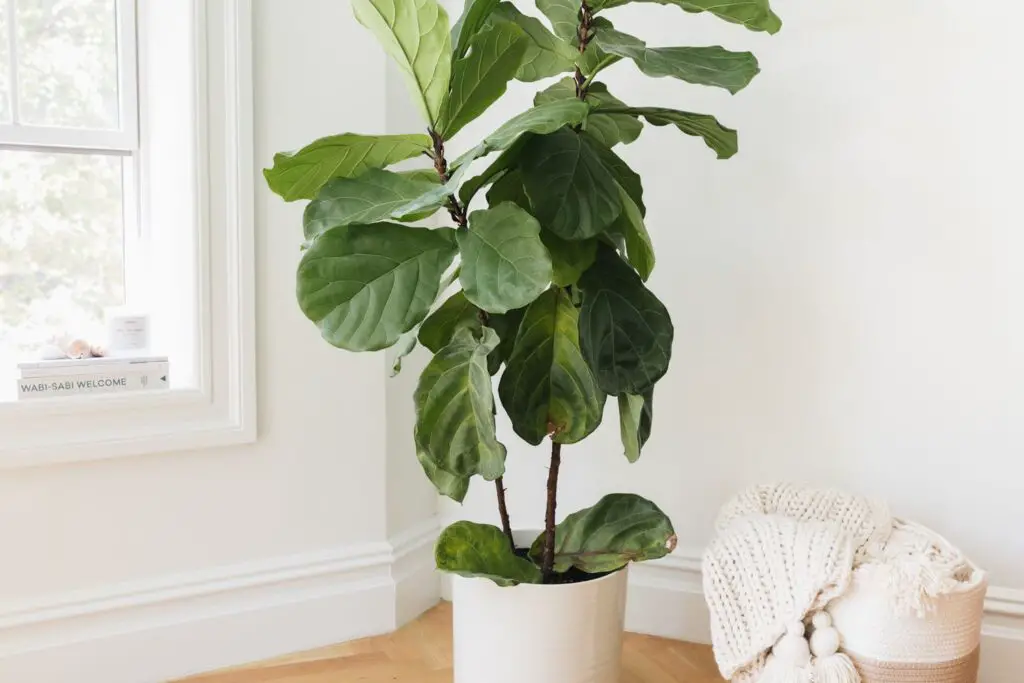
For lovers of striking indoor plants, the fiddle leaf fig is a showstopper. Its large, glossy leaves create incredible visual impact and fit seamlessly into modern spaces.
Care Tips:
- Light: Position in bright, indirect light. Can tolerate some direct morning light but avoid harsh afternoon sun.
- Watering: Water when the top inch of soil feels dry. Use lukewarm water and avoid overwatering to prevent root rot.
- Humidity: Prefers moderate to high humidity. Mist occasionally or use a humidity tray to prevent leaf browning.
- Soil: Use well-draining, nutrient-rich soil. A peat-based potting mix works well.
- Fertilizing: Feed with a balanced liquid fertilizer once a month during the growing season (spring and summer).
- Cleaning: Wipe leaves regularly with a damp cloth to remove dust and keep them glossy.
- Pruning: Trim damaged or leggy leaves to encourage healthy growth.
- Repotting: Repot every 1-2 years or when roots outgrow the pot.
Related Topics:
6. Ornamental Grass (such as Blue Fescue)
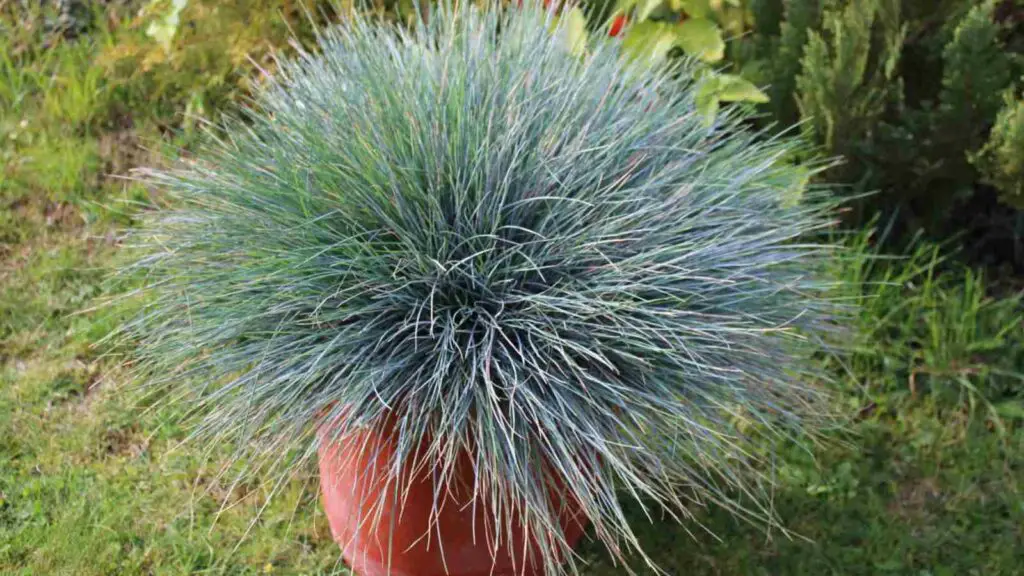
Ornamental grasses bring dynamic textures to your garden or patio. Blue Fescue, with its unique bluish-gray foliage, is an easy-to-grow option that looks fantastic in pots year-round.
Care Tips:
- Light: Place in full sun for the best color and growth. Partial shade may reduce vibrancy.
- Soil: Prefers well-draining soil; tolerates poor or sandy soils but avoids overly wet conditions.
- Watering: Drought-tolerant once established; water moderately, allowing soil to dry between waterings.
- Trimming: Trim dead or faded leaves in late winter or early spring to maintain a tidy appearance and encourage fresh growth.
- Fertilizing: Requires minimal feeding; apply a light, balanced fertilizer in early spring if needed.
- Spacing: Ensure proper spacing to allow good airflow and prevent fungal issues.
- Dividing: Divide clumps every 2-3 years to rejuvenate growth and prevent overcrowding.
7. Snake Plant (Sansevieria)
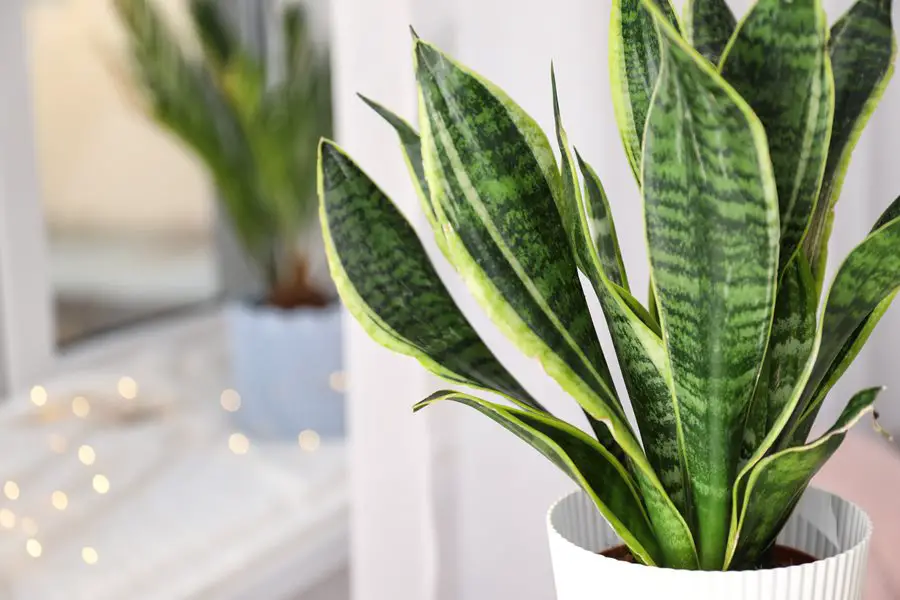
The snake plant is practically indestructible, which makes it a favorite among plant lovers of all skill levels. Its upright, architectural leaves come in striking green and yellow patterns that stand out in pots.
Care Tips:
- Light: Tolerates low to bright light but thrives in indirect light. Avoid prolonged direct sun, which can scorch leaves.
- Watering: Water sparingly; allow the soil to dry completely between waterings. Overwatering can lead to root rot.
- Soil: Prefers well-draining, sandy or cactus mix soil to prevent excess moisture retention.
- Humidity: Adaptable to various humidity levels but thrives in average indoor conditions.
- Fertilizing: Feed with a diluted balanced fertilizer once in spring and summer; minimal feeding is needed.
- Potting: Use a pot with drainage holes to prevent standing water.
- Air Purifying: Known for improving indoor air quality by filtering toxins.
- Propagation: Easily propagated through leaf cuttings or division.
8. Winter Heather (Erica carnea)
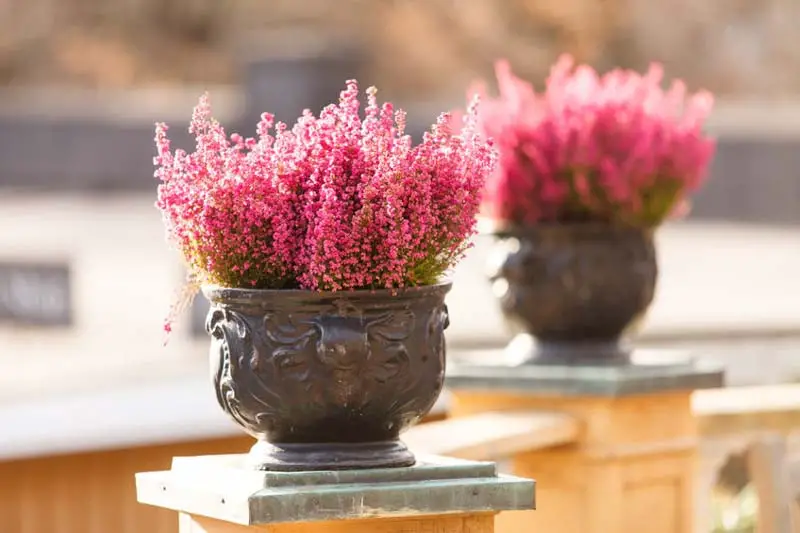
For a splash of color during the colder months, winter heather is unparalleled. Its vibrant pink or purple blooms endure frost and keep your garden looking fabulous during winter.
Care Tips:
- Light: Enjoys full sun to partial shade. More sunlight encourages better blooming.
- Soil: Prefers acidic, well-draining soil. Avoid alkaline or heavy clay soils.
- Watering: Keep soil consistently moist but not soggy. Drought-tolerant once established.
- Pruning: Trim lightly after flowering to encourage bushy growth and maintain shape.
- Fertilizing: Apply an acidic plant fertilizer in spring to promote healthy growth.
- Mulching: A layer of pine bark or peat moss helps retain moisture and maintain soil acidity.
- Cold Hardy: Thrives in colder climates and provides winter color when most plants are dormant.
9. Japanese Maple (Acer palmatum)
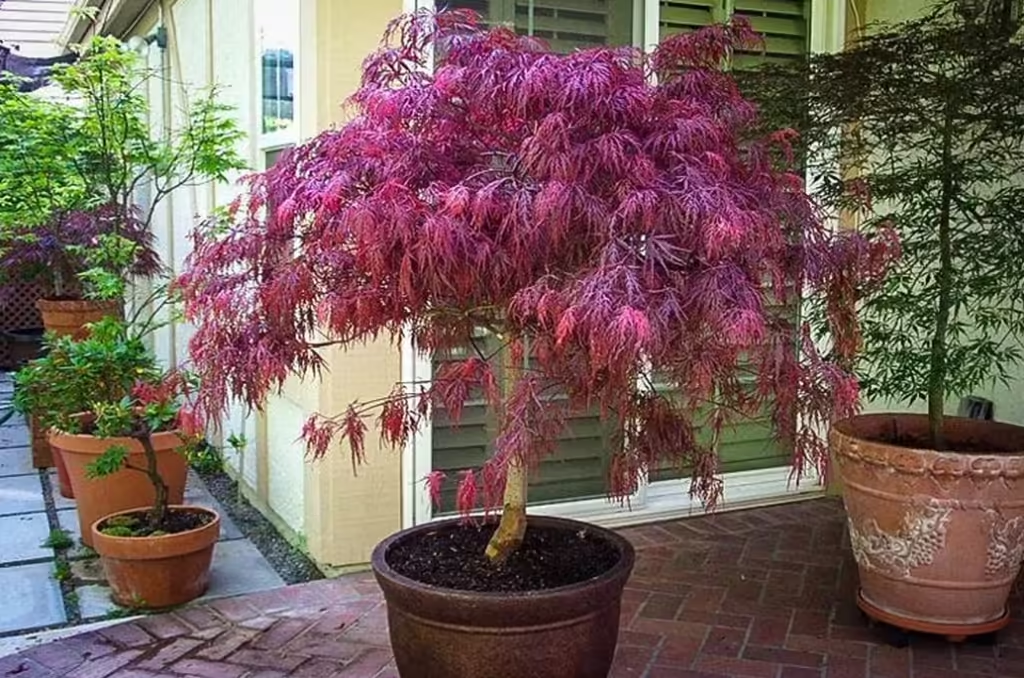
A small potted Japanese maple can bring elegance to any patio or garden. Its stunning foliage changes color with the seasons, making it a focal point year-round.
Care Tips:
- Light: Thrives in dappled shade; tolerates morning sun but should be protected from intense afternoon sunlight.
- Soil: Prefers moist, well-draining, slightly acidic soil rich in organic matter. Avoid heavy clay.
- Watering: Keep soil consistently moist but not soggy. Water deeply during dry spells.
- Protection: Shield from harsh winds to prevent leaf scorch and drying.
- Mulching: Apply a layer of mulch around the base to retain moisture and regulate soil temperature.
- Pruning: Light pruning in late winter or early spring to remove dead or crossing branches. Avoid heavy pruning.
- Fertilizing: Use a slow-release, balanced fertilizer in early spring to support healthy growth.
10. Rosemary (Rosmarinus officinalis)
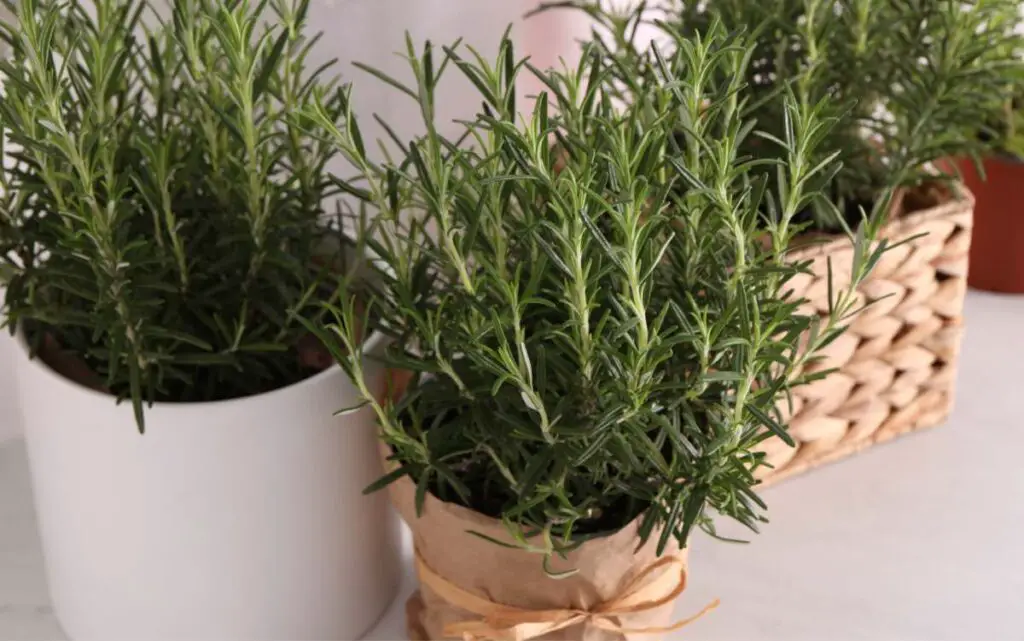
Rosemary is not just for cooking—it doubles as a beautiful potted plant! This fragrant herb thrives in pots, with its needle-like foliage providing visual interest in any season.
Care Tips:
- Light: Needs full sun (at least 6-8 hours daily) for optimal growth and flavor.
- Soil: Prefers well-drained, sandy or loamy soil with a slightly acidic to neutral pH. Avoid heavy, water-retentive soil.
- Watering: Water sparingly; let the soil dry out between waterings. Overwatering can cause root rot.
- Pruning: Trim regularly to prevent legginess and encourage bushy growth. Harvesting frequently also promotes new growth.
- Fertilizing: Requires minimal feeding; a light application of balanced fertilizer in spring is sufficient.
- Potting: If growing in containers, use a pot with drainage holes and a well-draining potting mix.
- Winter Care: Protect from frost in colder climates by bringing potted rosemary indoors or providing mulch for outdoor plants.
11. Hydrangeas (Hydrangea macrophylla)
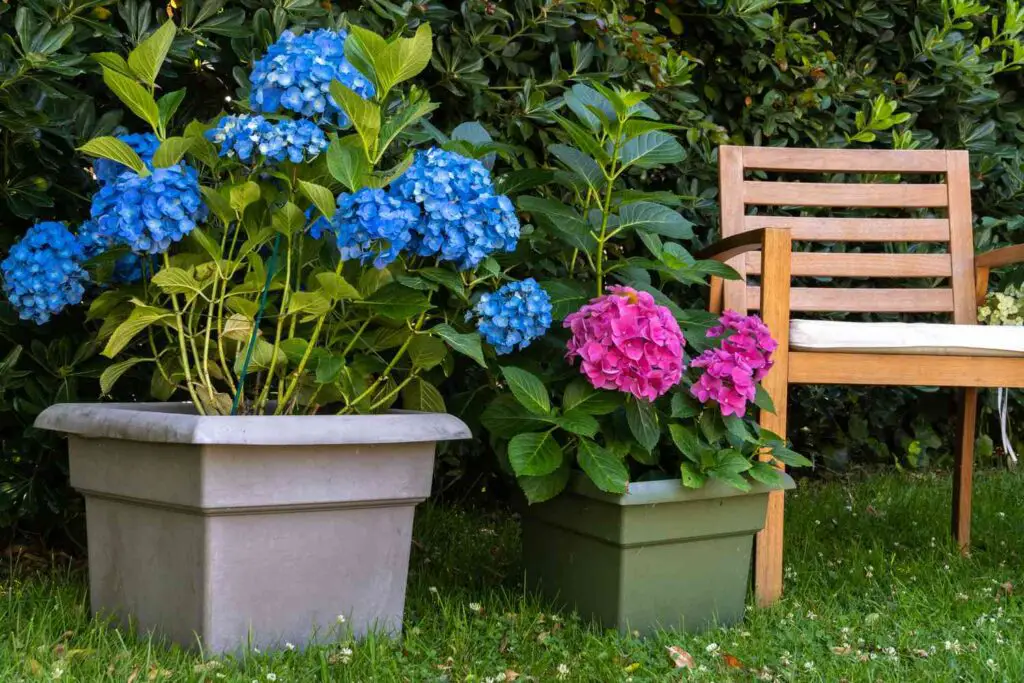
Hydrangeas add timeless beauty to outdoor pots. Their large, vibrant blooms come in shades of pink, blue, white, and purple, and certain hardy varieties thrive throughout the year.
Care Tips:
- Light: Prefers partial shade; morning sun with afternoon shade is ideal. Avoid intense midday sun.
- Soil: Requires well-draining, rich, and slightly moist soil. Mulch helps retain moisture.
- Watering: Keep soil consistently moist but not waterlogged. Deep watering is best, especially in hot weather.
- Bloom Color: Adjust soil pH to influence flower color—acidic soil (pH below 6.0) produces blue blooms, while alkaline soil (pH above 7.0) results in pink blooms.
- Pruning: Prune after flowering if needed. Avoid heavy pruning, as buds for next year’s blooms form on old wood.
- Fertilizing: Use a balanced fertilizer in spring and early summer for lush growth.
- Winter Protection: In colder climates, mulch around the base to protect roots from frost/
12. Succulents (Echeveria, Sedum, Crassula, etc.)
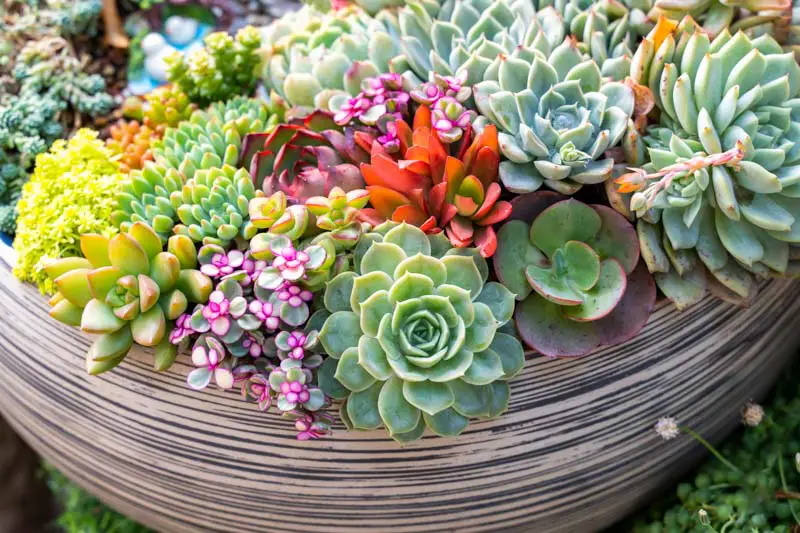
Succulents are stylish, low-maintenance plants that come in a variety of shapes, colors, and sizes. They shine year-round indoors or on sunny balconies.
Care Tips:
- Light: Provide lots of bright, direct or indirect sunlight (at least 6 hours daily). Insufficient light may cause leggy growth.
- Soil: Use sandy, well-draining soil or a cactus/succulent mix to prevent root rot.
- Watering: Water sparingly; allow soil to dry out completely between waterings. Overwatering is the main cause of succulent issues.
- Potting: Choose pots with drainage holes to avoid excess moisture retention.
- Humidity: Prefers dry environments; avoid excessive humidity, which can lead to rot.
- Fertilizing: Feed with a diluted cactus fertilizer once in spring and summer for healthy growth.
- Propagation: Easily propagated from leaves or stem cuttings. Allow cuttings to dry before planting.
How to Keep Your Potted Plants Thriving:
To maintain healthy, year-round potted plants, follow these key tips:
- Use Quality Pots: Ensure pots have good drainage holes to prevent root rot.
- Choose Well-Draining Soil: Avoid heavy garden soil and opt for potting mix designed for containers.
- Regular Maintenance: Trim dead leaves and repot plants as they grow.
- Adjust Seasonally: Move pots indoors during extreme weather conditions, if needed.
- Water Wisely: Water based on each plant’s needs—some prefer consistently moist soil, while others, like succulents, thrive with infrequent watering.
Transform Your Space Year-Round with Potted Plants:
Potted plants bring life, color, and style to your living space all year long. Whether you prefer fragrant lavender, the dynamic textures of ornamental grass, or the elegance of a Japanese maple, there’s no shortage of options to suit your taste.
With the right plant choices and proper care, your potted plants will flourish through every season, enhancing your environment with beauty and vitality.
Now it’s time to bring this list to life. Start building your own year-round oasis and watch as your plants reward you with nonstop charm.
FAQs:
Q1: What are the best pots to use for year-round plants?
The best pots for year-round plants are those made of durable materials such as terracotta, ceramic, or fiberglass. Ensure the pots have proper drainage holes to prevent waterlogging, which can harm your plants. For outdoor pots, consider weather-resistant options to withstand seasonal changes.
Q2: How often should I water year-round potted plants?
Watering frequency depends on the type of plants, pot size, and environmental conditions. Generally, check the soil moisture by inserting your finger about an inch deep. If the soil feels dry, it’s time to water. During hotter months, plants will likely need more frequent watering, whereas in cooler seasons, you should reduce it to avoid overwatering.
Q3: Can I keep potted plants outside all year round?
Yes, many hardy plants, like evergreen shrubs or seasonal perennials, can stay outside year-round. However, in extreme weather conditions, such as frost or intense heat, it’s important to protect pots by mulching, wrapping them in insulating material, or moving them indoors temporarily. Always choose plants suited to your local climate for optimal results.
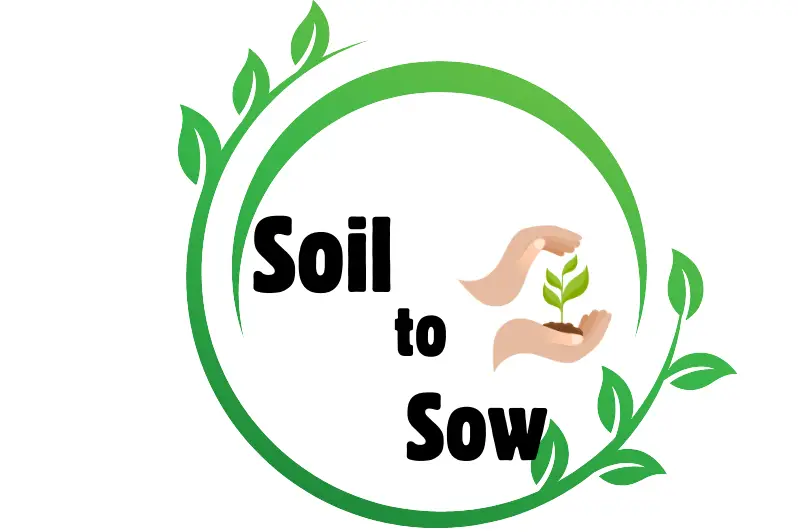

3 thoughts on “12 Best Plants for Pots All Year Round: Thriving in Every Season!”